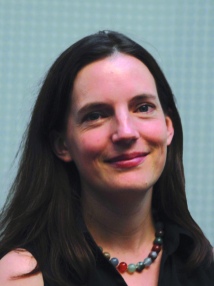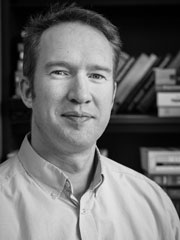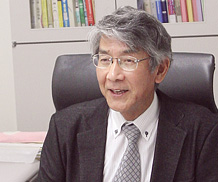Bones do a good job of repairing themselves, except when they can’t.

When bones are broken beyond self-repair, doctors take pieces of the hip bone, specifically a part called the iliac crest, and graft it where it is needed. But there’s only so much iliac crest available, and the procedure results in years of pain. But Molly Stevens has developed an alternative. Her in-vivo bioreactor system harvests stem cells from the leg bone to enable bone regeneration.
A professor in Biomedical Materials and Regenerative Medicine at London’s Imperial College, Stevens’ work in creating new biomaterials to detect disease and repair bones and human tissue has made her a rising star in life science. At this year’s Polymer Networks Group Meeting , June 19-23 at KTH Royal Institute of Technology, she will join an impressive line-up of plenary speakers.
Like biological tissue, polymer can also be made to self-heal, and that’s one of the research areas that keynote speaker Filip Du Prez, head of the Polymer Chemistry Research Group at Gent University in Belgium, and his 30 researchers are dealing with. Among others are the design of functional polymer architectures and polymer materials, various types of controlled polymerization techniques, and the development of new “click” chemistries.

Also addressing the plenary is University of Tokyo Professor Mitsuhiro Shibayama, who is one of the world-leading researchers on the physics of so-called “soft matter” or “soft materials”.
Eva Malmström, Professor at Fibre and Polymer Technology at KTH, is proud that the conference is to be held at KTH for the first time, and says that the conference will bring together world-leading experts and graduate students from all around the
world in a dynamic mix. “It will be exciting to learn about the most recent findings in general and especially interesting to hear more about bio-based materials. Hopefully the conference’s setting will pave the way for stimulating discussions and fruitful networking”.
The plenary includes a host of international research leaders:
Dominique Hourdet, Université Pierre et Marie Curie, Paris, France — “Macromolecular assemblies in aqueous media: from controlled rheology of polymer solutions to mechanical reinforcement of covalent hydrogels”
Olli Ikkala, Aalto University, Helsinki, Finland — “Supramolecular Functionalization of Molecular Colloids and Colloidal Networks”

Bela Iván, Research Centre for Natural Sciences, Hungarian Academy of Sciences, Budapest, Hungary —”Amphiphilic Conetworks as a New Material Platform of Bicontinuous Nanophasic Macromolecular Assemblies, Intelligent Gels and Unique Organic-Inorganic Nanohybrids”
James Lewicki, Lawrence Livermore National Laboratory, CA, USA — “A Multi-scale Experimental and Computational Approach to Studying Network Dynamics in Complex Polysiloxane Elastomers”
Zhigang Suo, Harvard John A. Paulson School of Engineering and Applied Sciences, Boston, USA — “Soft Materials and Soft Machines”
Françoise M. Winnik, University of Montreal, Montreal, Canada — “Biological Responses to Chitosan Substituted With Zwitterionic Groups”
Chi Wu, The Chinese University of Hong Kong, Hong Kong — “A Novel Microrheometer – Total Internal Reflection Microscope Marries Magnetic Tweezers”

Awesome article!
Thanks for sharing. Really enjoyed!